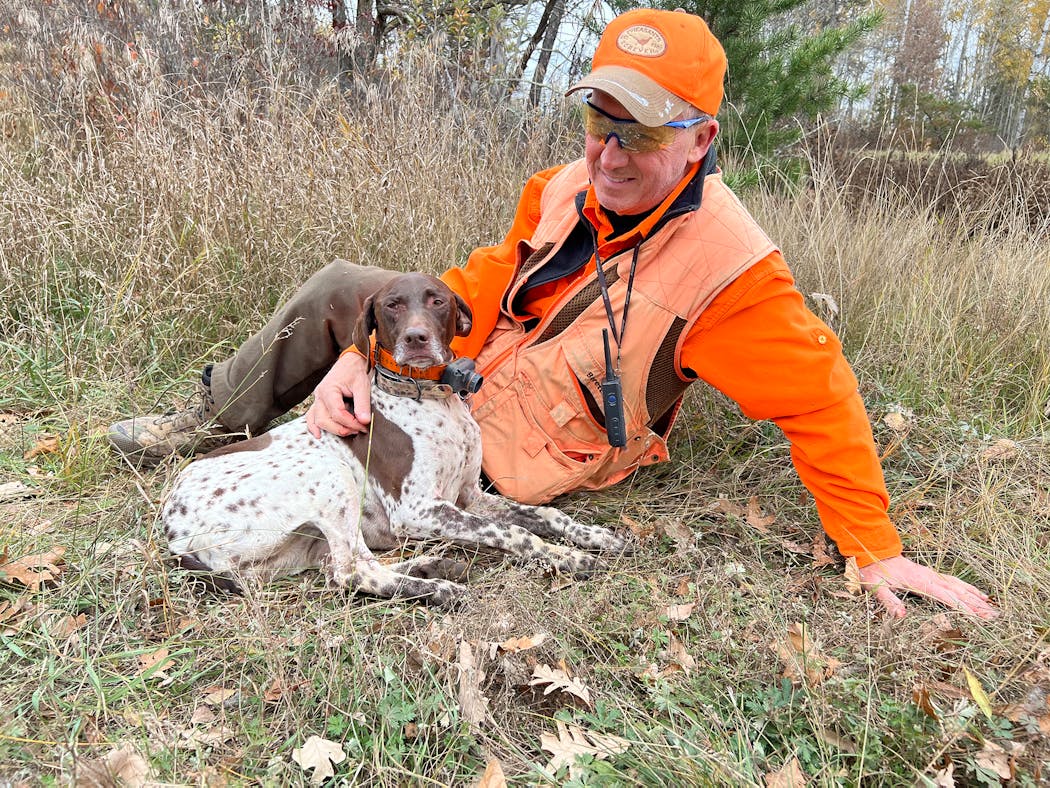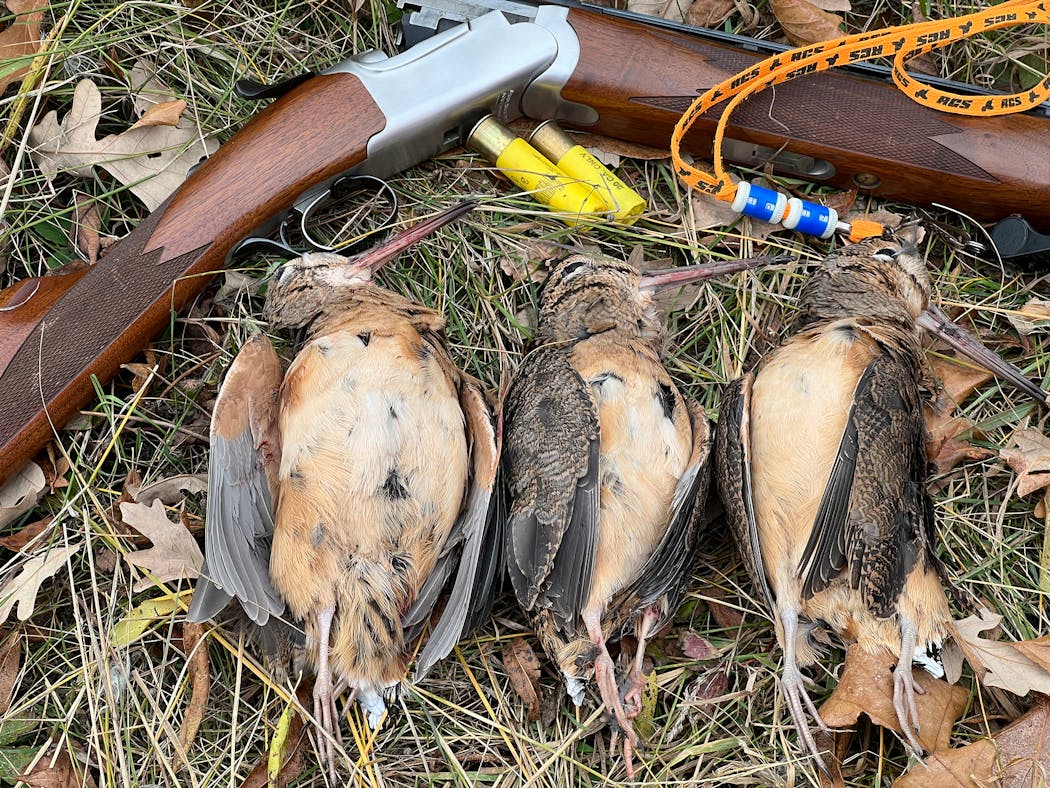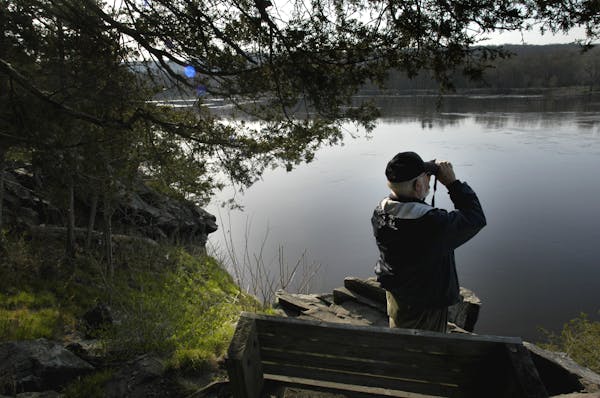IN NORTH CENTRAL MINNESOTA — While it's possible to hunt ducks without a dog, and pheasants and even ruffed grouse, chasing woodcock without a pointer out ahead, or even a Labrador or other flushing dog, is not so much unproductive — though it is often that — as it is joyless.
I was thinking about this a short while back while Bill Marchel, Rolf Moen and I roamed a labyrinth of gravel backroads about an hour north of Brainerd.
On similar past adventures, we had been accompanied by two and sometimes three dogs. But on this day, we had with us only a single prize fighter, Rolf's 5-year-old German shorthair, Sally.
The description is apt, a prize fighter, because, as challenging for the wing shooter as woodcock and, yes, grouse hunting can be, the birds' pursuit is even more taxing — far more so — for dogs that must bust through alder thickets, gray dogwood coverts and forearm-thick aspen stands at ground level.
Which is why now, in midafternoon, between hunts, Sally was sleeping soundly while we drove to another hunting spot, our third that day.
"Sally's doing great,'' Bill said.
A migratory forest inhabitant with an upside-down brain, the woodcock, also known as the timberdoodle, is an ideal game bird for a pointing dog to pursue.
This is because woodcock, once scented by a dog that subsequently freezes, or "points,'' oftentimes holds tight while an accompanying hunter moves ahead of the stationary canine to flush the bird and (with luck and skill) shoots it in midair.
Shorthairs, Brittanies and other so-called continental breeds are said to be woodcock specialists, and there's general agreement here. More so than setters and other pointing breeds that work with their heads and noses held high, shorthairs, among other, similar-working canines, tend to hunt with their noses closer to the ground, and thus are more likely to locate and point woodcock.
The challenge by contrast that ruffed grouse present to dogs and hunters places these birds in a sporting class all their own.
Unlike woodcock, grouse, when pressured by advancing hunters and their dogs, oftentimes simply walk away, or run away, and/or flush and fly away.
This can and frequently does occur so far in advance of a hunter's arrival that the only indication of a grouse being on site is the sound of its wings beating on takeoff.
This hypersensitivity is why setters and other air-sniffing dogs sometimes make the better grouse finders. Hunting with their noses held high, they often are able to scent grouse from long distances. Such "full choke noses,'' as they are called, can signal to a hunter that a grouse is ahead, even quite a distance ahead, which allows for a more cautious, and sometimes more fruitful, approach.
Yet whether the bird being pursued is a woodcock or grouse, a dog no matter its breed has a better chance to develop into an experienced and productive hunter if he or she sees a lot of action.
A friend of mine, Walt Bruning, who used to own two Brittanies, often said, "If you want to make up a good grouse and woodcock dog, you have to snap some caps over them.''
Translation: To learn how to outfox grouse and woodcock (pheasants, too, but they're a different story), dogs must be taken hunting, and while hunting shown a significant number of birds in varying situations.
Only through this experience can a dog learn the tricks of the forest-bird-hunting trade — stopping as soon as bird scent is detected, for example, and holding there until a hunter approaches.
Yet finished grouse dogs are particularly challenging to develop when ruffed grouse are in the downward arc of their population cycle.
At these times, woodcock can and do fill the void, and nicely. Not only do they provide excellent table fare, they often present useful dog-training opportunities, assuming hunts for these birds are timed to their peak migration through Minnesota, say generally, Oct. 5-25.
As soon as we stopped, Sally was alert and quickly out of the truck, with Bill, Rolf and I following behind.
A healthy mix of spruce, aspen and some pine dominated this covert, with an understory of alders and dogwood, presenting, we thought, equal opportunities for grouse and woodcock.
"I'll take the middle with Sally, if you two want to be on either side of me,'' Rolf said.
Such hikes aren't for everyone. Deadfalls often clutter the forest floor, and branches pose innumerable threats to exposed skin. Amid this jamboree of obstacles, fast-departing birds must be targeted successfully. Otherwise, it's just another walk in the woods.
"The ground is so dry, I can see why we're not finding more than one woodcock here and there,'' Bill said. "They like the ground moist and soft, so they can probe it for food with their beaks.''
Wearing a special collar that beeped at defined intervals as she hoovered the ground ahead, Sally appeared and disappeared in a flash of white, her nose leading the way.
When the collar's beep changed rhythms, indicating she was on point, Bill, Rolf and I converged in her direction.
"She's over here,'' Rolf said.
This would be Bill's opportunity, and he crouched beneath overhanging branches while advancing slowly toward, and then ahead of, Sally's rigid pose.
No greater anticipation than this is provided by any sport, and when the pointed woodcock finally helicoptered from the forest floor, rising vertically before hitting the afterburners and attempting its escape, Bill chased it with a load of chilled 7½s.
So it went on an autumn day in north-central Minnesota. For Sally, and for us.
Anderson: He paddled solo into the BWCAW and didn't come back

Anderson: In early June, Minnesota fish are begging to be caught. Won't you help?





